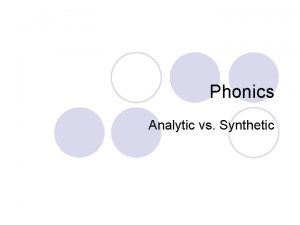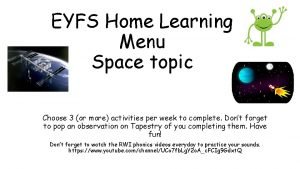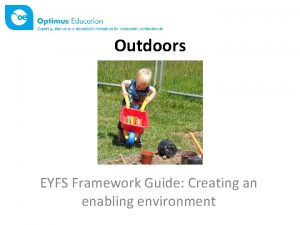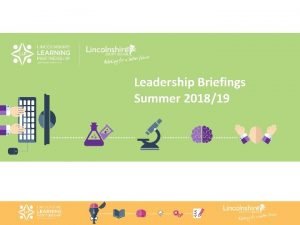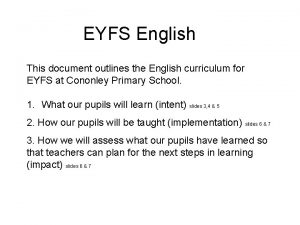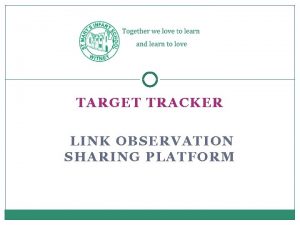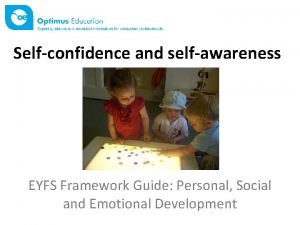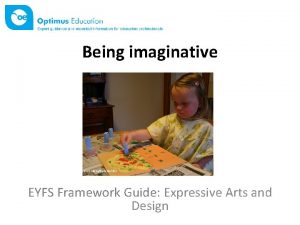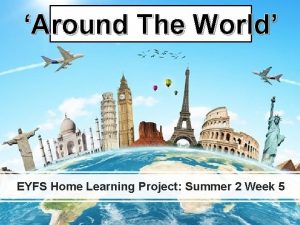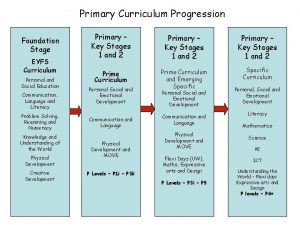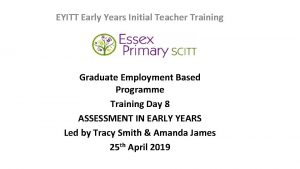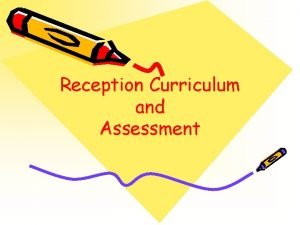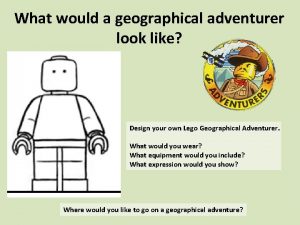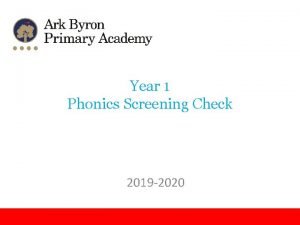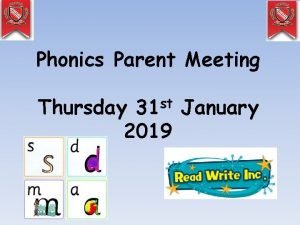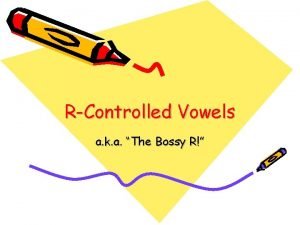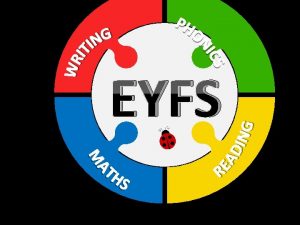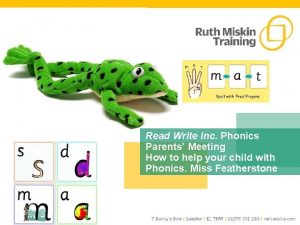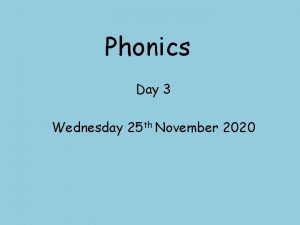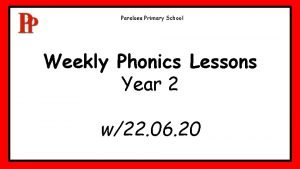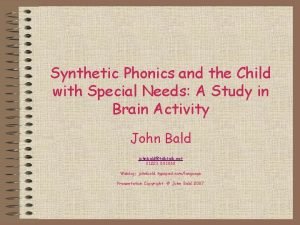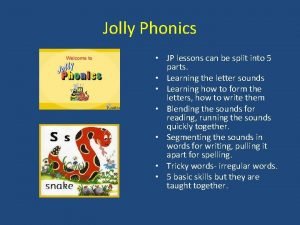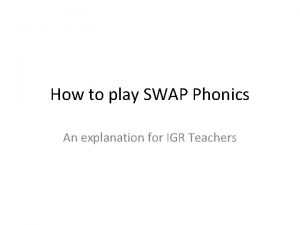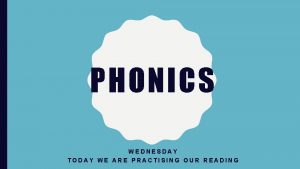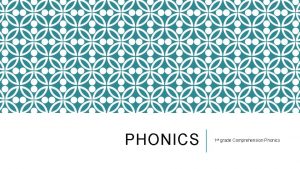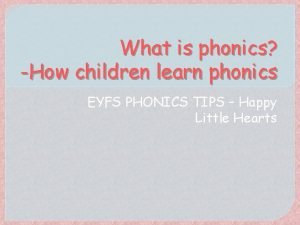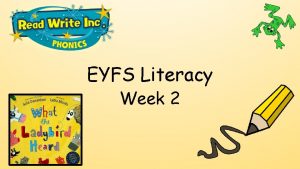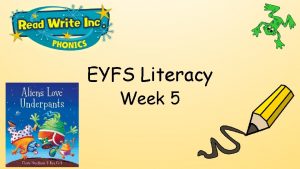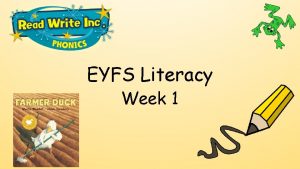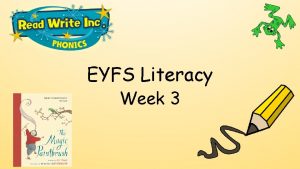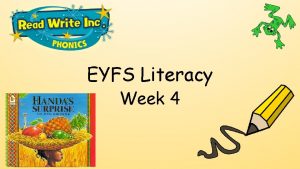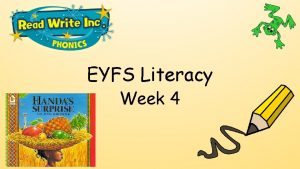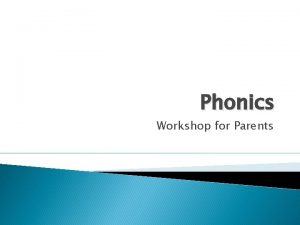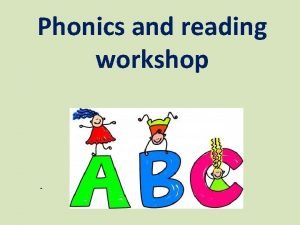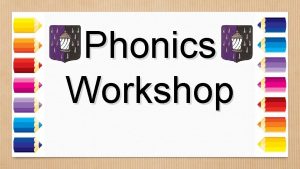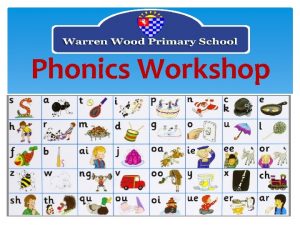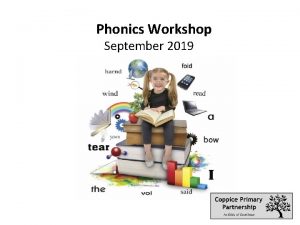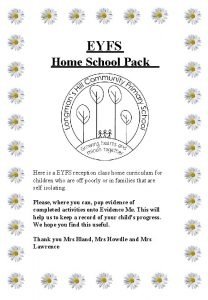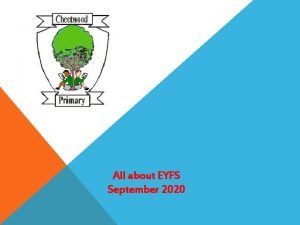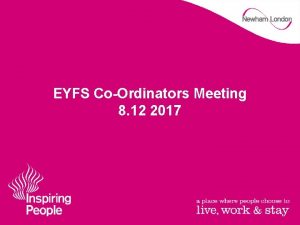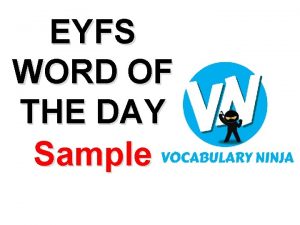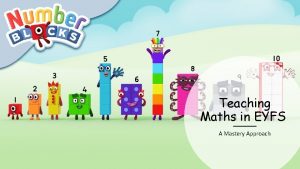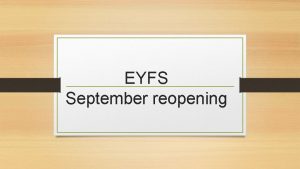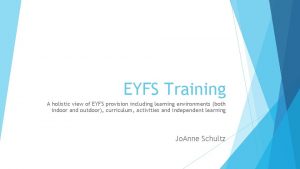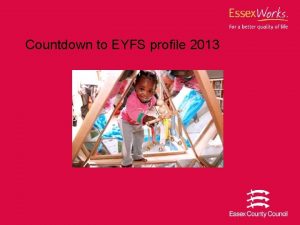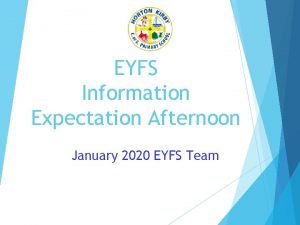Phonics Workshop 2019 Phonics in EYFS 2019 What



























- Slides: 27

Phonics Workshop 2019

Phonics in EYFS 2019 • What is phonics? • The Phases taught in EYFS and Year 1 • Teaching tricky words • Activities and ideas

Why do we need to teach Phonics? It is a strategy to support word recognition for reading Teaches children to connect the letters of the alphabet to the sounds they make, blending them together from left to right to make a word

Cracking the Code • 26 letters of the alphabet • 44 sounds in the English Language (Jolly Phonic Letter Sound British English) • 144 different ways we put letters together to represent the sounds

Video • It is important that the sounds are pronounced correctly in order for children to blend the sounds together to read words • Jolly Phonics Actions

Beginner readers should be taught four things: So what should be taught? Phonemes or ‘sounds’ to synthesise (blend) phonemes (sounds) in order, all through a word, to read it to segment words (break up) into their constituent sounds for spelling

To make it simple: What sound? S s i t Can you blend the sounds together? Can you sound out this word for me? (segmenting) (blending) sit

Blending is a difficult skill to master. It simply requires PRACTICE and lots of it. It’s critical to introduce children to the phonemic awareness skills of oral blending at an early age. Modelling how to orally blend to create a spoken word and how to break a word apart is how to start a child’s blending and segmenting journey. Once children can blend at an oral level, the blending of words in print becomes a lot easier. Let’s watch it in action!

• Phase 1 Nursery Sound discrimination – environmental sounds and instrumental sounds • listening and remembering sounds • Rhythm and rhyme • talking about sounds • (developing vocabulary and language comprehension)

Aspect 1: Environmental sounds Stories – Walk around local area • Aspect 2: Instrumental sounds Bag of instruments – Add sound effects • Aspect 3: Body percussion Action songs and rhymes • Aspect 4: Rhythm and rhyme Rhyming stories – What rhymes with…? • Aspect 5: Alliteration Having fun with names – Story characters • Aspect 6: Voice sounds Adding different voices to stories • Aspect 7: Oral blending and segmenting Robot speech c-a-t and Put it together •

Introduces 19 sounds • As soon as children have learnt a small number of sounds , blending and segmenting can start • We learn how to write the sounds • Phase 2 (68 weeks)


Phase 2 Tricky Words!

Phase 2 Digraphs ff huff puff ll hill bell ss fuss mess ck rock pick

Look at the resources on your tables, explore how they can be used in the teaching of phonics Activity Find the list of words with Phase 2 sounds, can you sound out the words? Can you blend them together?

Reading for Pleasure • • Use real objects Use puppets Link to a title in a known text Link to a character’s name in a known text High quality poetry / rhyming texts Link to known songs and rhymes Link to words being used across the curriculum

Making Phonics fun!!

Reading and Writing longer sentences The cat is on the bed A rat in a big cup The bell is on a hill

Phase 3 (12 weeks) • children will be able to represent about 42 sounds • continue to practice CVC blending and segmentation • application of their knowledge of blending and segmenting to reading • learn to read some more tricky words • learn to spell some of these words • learn letter names


Examples of Phase 3 words moon rain bee cow book queen

Phase 3 Tricky Words

Phase 4 (46 weeks) • To consolidate all the learning in phases 2 and 3 • No new sounds or digraphs to learn • Develops children's skills knowledge and skills of blending and segmenting words with adjacent consonants, e. g. stairs, tent, brain • Read and spell multi syllabic words e. g. lunchbox, desktop • Tricky words

Early Learning Goal • Reading: Children read and understand simple sentences. They use phonic knowledge to decode regular words and read them aloud accurately. They also read some common irregular words. They demonstrate understanding when talking with others about what they have read. • Writing: Children use their phonic knowledge to write words in ways that match their spoken sounds. They also write some irregular common words. They write simple sentences which can be read by themselves and others. Some words are spelt correctly and others are phonetically plausible.

Purpose of this phase: • Learn new representations of vowel digraphs learn in phase 3: ai – ay, a-e • Rain, day, bake Phase 5 (Throughout Year 1) • Alternative pronunciations for the graphemes children already know: ow – blow, cow • Develop ability to choose the appropriate graphemes to represent phonemes when reading and writing. • Split digraphs • Tricky words

Introduced by the Department of Education in 2012 Phonics Screening Test The aim of the check is to show well your child can understand phonics at the end of Year 1 and to identify students who need extra help The children who do not pass the phonics test will have to take it in Year 2

Phonicsplay. co. uk Useful websites For sound pronunciation: https: //www. youtube. com/watch? v=Iw. Jx 1 NSine. E For Jolly Phonics Actions: https: //www. youtube. com/watch? v=y. Vyry 9 jp. Vj. I
 Difference between synthetic and analytic phonics
Difference between synthetic and analytic phonics Eyfs space activities
Eyfs space activities Enabling environments eyfs
Enabling environments eyfs Eyfs profile data 2018
Eyfs profile data 2018 Services for young children hampshire
Services for young children hampshire Eyfs english curriculum
Eyfs english curriculum Trackerlink
Trackerlink Eyfs
Eyfs Being imaginative eyfs
Being imaginative eyfs Around the world eyfs
Around the world eyfs Eyfs curriculum progression
Eyfs curriculum progression Eyitt
Eyitt What is eyfs
What is eyfs Eyfs geography
Eyfs geography Mark making reception
Mark making reception Phonics screening 2019
Phonics screening 2019 Phonics test 2019
Phonics test 2019 Ir words phonics
Ir words phonics Jolly phonics p
Jolly phonics p What is phonics
What is phonics Read write inc fred fingers
Read write inc fred fingers Phonics play phase 5
Phonics play phase 5 Presetense
Presetense Synthetic vs analytic phonics
Synthetic vs analytic phonics Jolly phonics
Jolly phonics Swap cards phonics games
Swap cards phonics games Explicit phonics instruction
Explicit phonics instruction Wednesday phonics
Wednesday phonics
